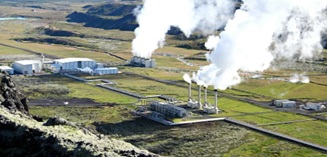22 September, 2025
National Policy on Geothermal Energy 2025
Sun 21 Sep, 2025
Context
- In 2025, the Ministry of New and Renewable Energy (MNRE) launched the National Policy on Geothermal Energy, aiming to tap into India’s significant geothermal potential and reduce carbon emissions through clean, sustainable energy alternatives.
What is Geothermal Energy?
- Geothermal energy is heat energy derived from the Earth’s subsurface, originating from radioactive decay and residual heat from the planet’s formation. It can be accessed via hot springs, hydrothermal reservoirs, or by tapping into deep wells drilled into geothermal fields.
India’s Geothermal Potential:
India has an estimated geothermal potential of over 10 GW, concentrated in regions like:
- Himalayan belt (Jammu & Kashmir, Himachal Pradesh, Uttarakhand)
- Tertiary belt (Rajgir, Jharkhand)
- Cambay Graben (Gujarat)
- Son–Narmada–Tapi belt (Madhya Pradesh)
- Godavari Graben (Andhra Pradesh)
- Andaman & Nicobar Islands
However, lack of policy clarity, high costs, and technical constraints have limited its development so far.
About the National Policy on Geothermal Energy 2025
| Feature | Description |
| Launched By | Ministry of New and Renewable Energy (MNRE) |
| Year | 2025 |
| Aim | Accelerate geothermal resource development in India |
| Target | Unlock India’s 10 GW geothermal potential |
Key Objectives of the Policy:
1. Research and Innovation:
- Promote R&D in areas such as drilling, sub-surface mapping, geothermal reservoir management, and direct-use technologies.
- Support startups and technical institutions working on cost-effective geothermal solutions.
2. Decarbonization:
- Use geothermal energy for non-electric applications like space heating/cooling, greenhouses, industrial processing, milk pasteurization, and tourism development in hilly areas.
- Aid India’s goal to achieve Net Zero emissions by 2070.
3. Infrastructure Utilization:
- Repurpose abandoned oil and gas wells for geothermal exploration and production.
- Reduce drilling costs and environmental impact.
4. Collaboration & Stakeholder Involvement:
- Facilitate collaboration between:
-
- Central and state governments
- Oil & gas sector
- National research institutions
- International geothermal energy organizations
5. Public-Private Partnerships (PPP):
- Encourage private investment in geothermal plants.
- Create a policy and financial framework for bidding, subsidies, and risk mitigation.
Implementation Mechanism:
- Nodal Agency: MNRE to oversee national coordination.
- States with geothermal sites will be encouraged to form State Geothermal Missions.
- A Geothermal Data Repository will be set up to support investors and researchers.
- Regulatory frameworks for environmental clearances, land acquisition, and royalty sharing will be simplified.
Benefits of the Policy:
| Benefit | Impact |
| Reliable Energy | Geothermal is available 24x7, unlike solar or wind |
| Clean & Sustainable | Very low emissions and environmental impact |
| Local Economic Boost | Employment and tourism in geothermal zones |
| Efficient Heating/Cooling | Useful for cold regions like Ladakh and Himachal Pradesh |
| Cost-effective in Long-Term | High initial investment but low operating costs |
Challenges Ahead:
- High Initial Investment Costs
- Lack of skilled manpower
- Geological Risk and Exploration Uncertainty
- Limited awareness among investors
- Need for inter-ministerial and interstate coordination
Way Forward:
- Develop pilot geothermal plants in Ladakh, Gujarat, and Chhattisgarh.
- Provide financial incentives and risk mitigation support under MNRE’s schemes.
- Ensure capacity building and training programs.
- Promote international collaborations for technology transfer and knowledge sharing.
Conclusion:
The National Policy on Geothermal Energy 2025 is a significant step toward India's clean energy transition. By harnessing geothermal potential efficiently, India can diversify its energy mix, enhance energy security, and contribute to global climate action. With effective implementation, this policy can position India as a leader in sustainable geothermal technology in the Global South.


















